
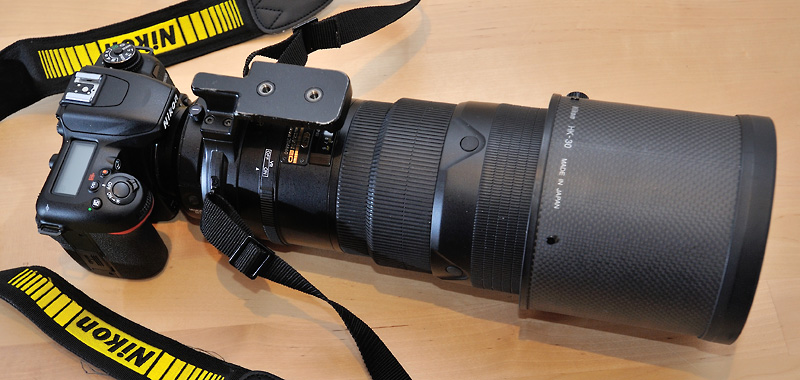
|
By (nearly) all means: this is a great lens! In spring 2016 I had my first contact with the AF-S 300mm f/2.8G VRII - I rented one for a trip to Heligoland. I was really impressed by the perfomance of this lens. It was the best I have ever had in front of my Nikon! Please read my hands-on review from May 2016 - I can fully confirm my results from back then.
After renting it two more times, I bought my own on the second-hand market in spring 2018. Despite its size and weight, it has completely replaced my 300mm f/4D. In this article, I would like to share my more recent findings on the AF-S Nikkor 300mm f/2.8G VRII.
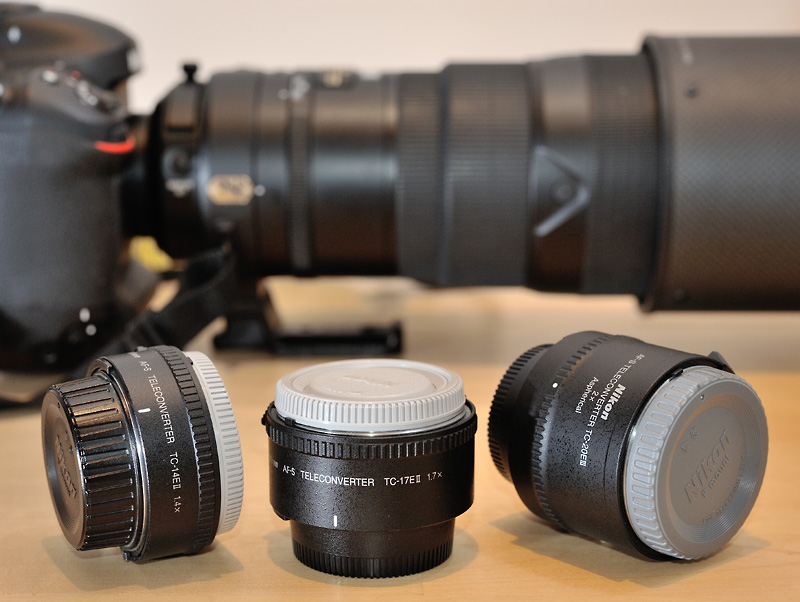
|
I own all three E-Teleconverters. Each one performs overall very well together with the 300mm f/2.8G VRII. However, I have to adress two issues:
1.) With the TC-17EII on a full-frame body, there is some blurriness at the borders of the image at longer distances (about 100m or more). BTW: the TC-20EIII does not have such a problem. Here is an example of the issue:
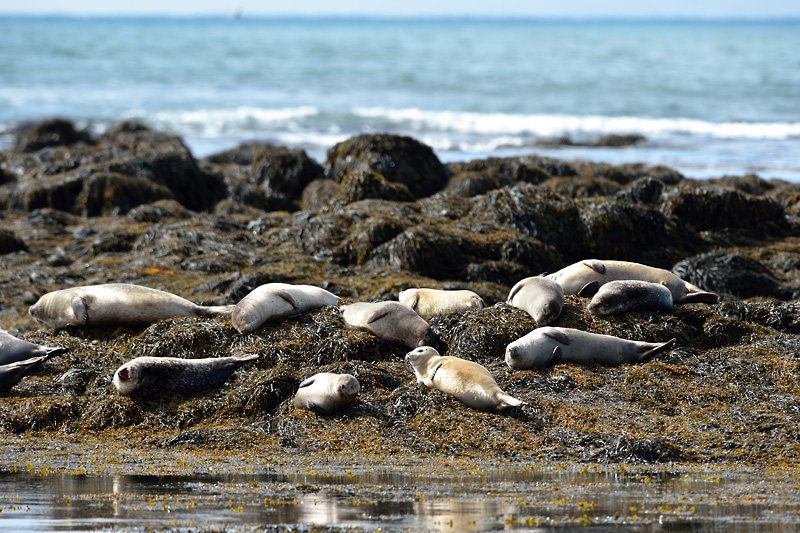
|
|
A group of harbour seals having siesta. Shot in Iceland in May 2018 with my D4, TC-17EII and 300mm f/2.8G VRII at F8 and 1/2000sec. |
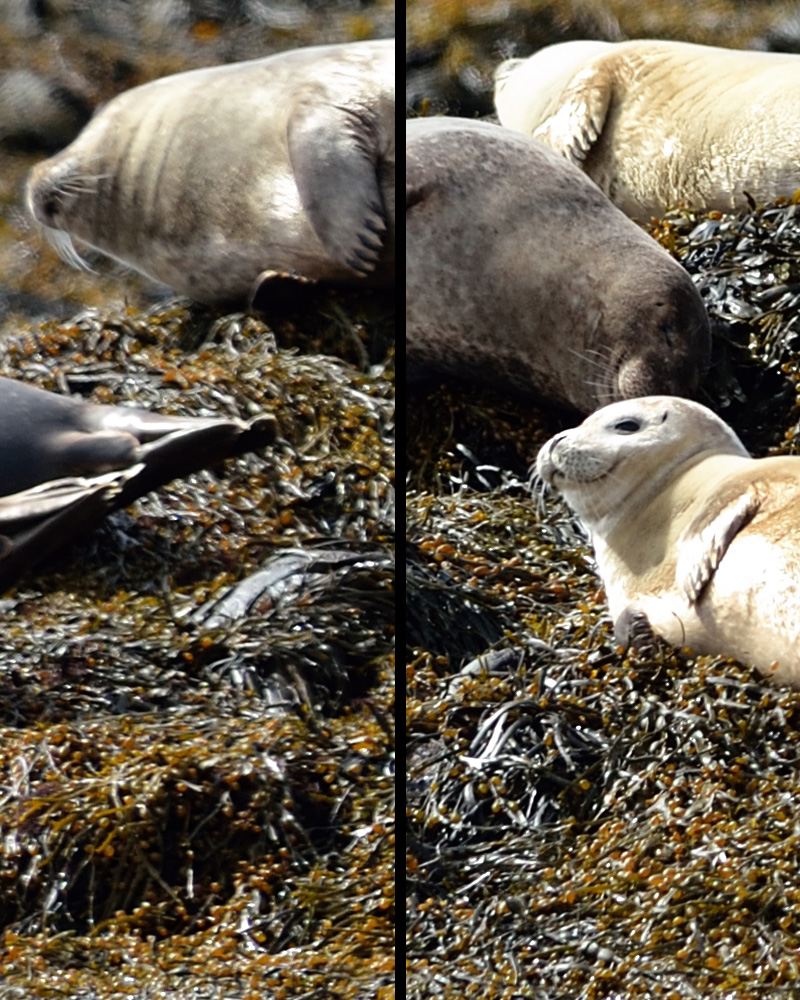
|
|
Two 100% crops from the image above. The crop from the border is significantly less sharp! |
2.) The combination with the TC-20EIII is not recommended in conjunction with a high pixel density sensor (e.g. the 20 or 24MP DX-sensors) - the resolving power is apparently not sufficient! In contrast, the combination of TC-17EII plus 300mm f/2.8G VRII still works well on my D7500, although the resolving power seems to be close to the limit. For me, these findings also mark the maximum reach of the combinations discussed here: it is 765mm full-frame equivalent:
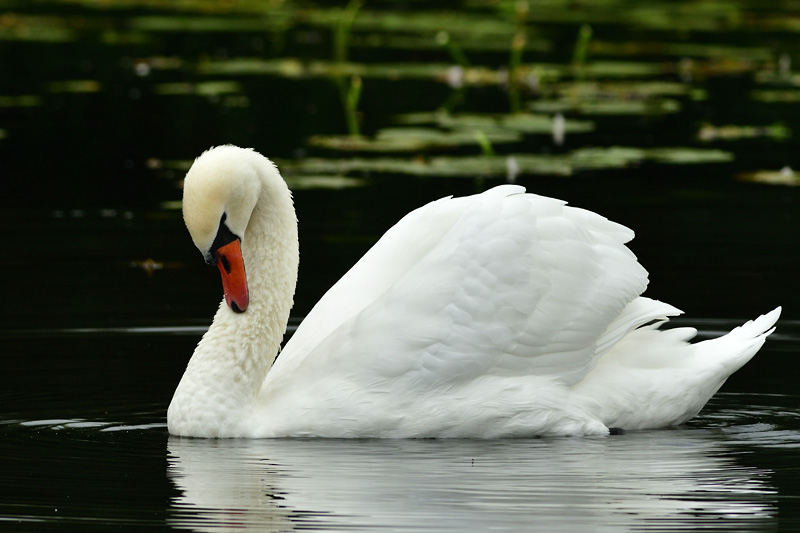
|
|
A mute swan on an arm of the river Ems. Captured in October 2020 with my D7500, TC-17EII and 300mm f/2.8G VRII on a monopod at ISO 250, F6.3 and 1/500sec. |
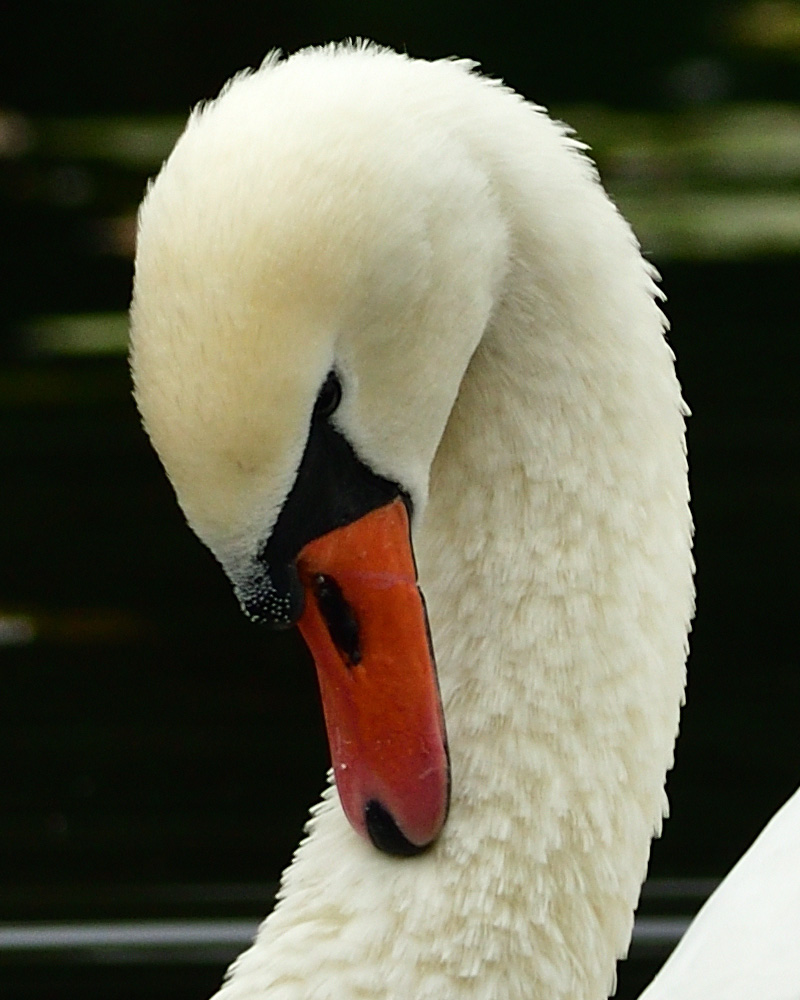
|
|
100% crop from the image above. |
I currently use my 300mm f/2.8G VRII mainly in these combinations with teleconverters, all of which deliver very good image quality:
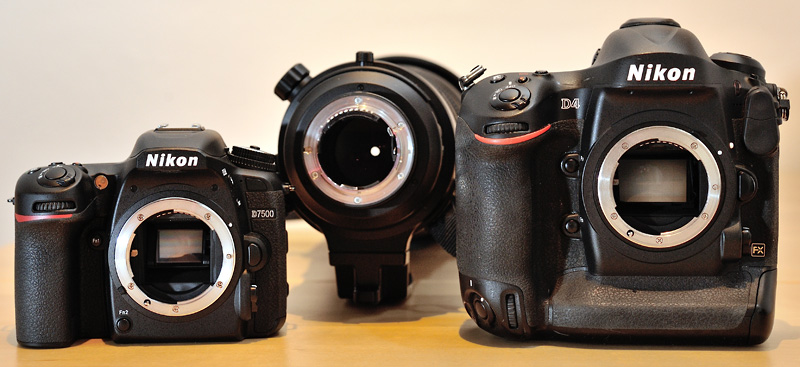
|
Two comparisons are of interest:
First of all, there is a space and weight advantage with the DX solutions: a DX body is slightly smaller and lighter than an FX body and only one teleconverter is needed. Advantage: DX.
The DX versions are one f-stop faster, but an FX sensor produces less noise. My impression is that the lower noise of the FX housing accounts for more than one f-stop. Slight advantage: FX.
An FX sensor usually delivers better image quality, e.g. in terms of dynamic range, colour range or tonal range. Slight advantage: FX.
With the same autofocus system, the single AF sensor on an FX body is smaller in relation to the overall image, which allows for more precise focussing in some situations. On the other hand, the coverage of the image with AF sensors is relatively more extensive with a DX body. But the most important advantage of the DX body when it comes to autofocus is that the system has one more f-stop of light available - this makes the AF system work faster and more reliably! Advantage depends on the specific application, but all in all it is more DX.
Without having systematically investigated it, I have the impression that the DX versions generally deliver the somewhat more pleasant bokeh. I assume that this is due to the fact that a teleconverter tends to have a negative impact on the bokeh, and the stronger the converter, the stronger the impact. Slight advantage: DX.
To be able to make such comparisons, I bought the D7500 body in autumn 2020. I also considered a D500, but in the end the advantages were not worth the extra price.
My current tendency is to use the D7500 instead of the D4. The second body for landscape and general photography remains an FX body anyway, which I would also use if I were shooting "pure" at 300mm.
It is possible to use the 300mm f/2.8 hand-held. But along with the camera and a possible teleconverter we are talking about more than 4kg. Especially when you are observing your subjects through the viewfinder for a long time in wildlife photography, using it hand-held is exhausting and annoying!
However, hauling around a good tripod is usually too exhausting for me as well. Furthermore, you lose flexibility with a tripod.
A good compromise for me is a monopod. My 20-year-old Manfrotto 681B is the ideal complement to the AF-Nikkor 300mm f/2.8G VRII! This professional monopod consists of only three segments and is therefore super stable!
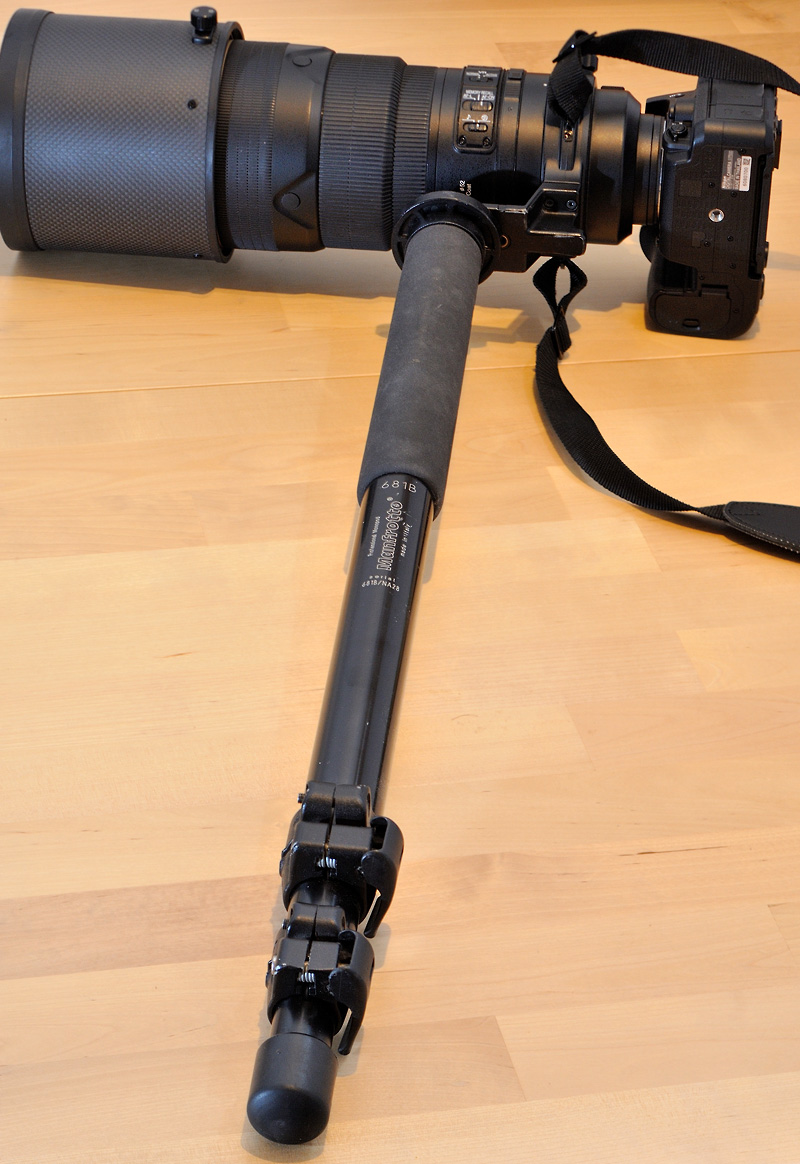
|
I have tried several heads and couplings between the monopod and the lens. The result is that I do not use anything in between - I screw the monopod directly into the lens when needed.
With a lens like this, the tripod mount is not just a tripod mount. It is also a carrying handle for the complete unit (camera body, optional teleconverter and lens)!
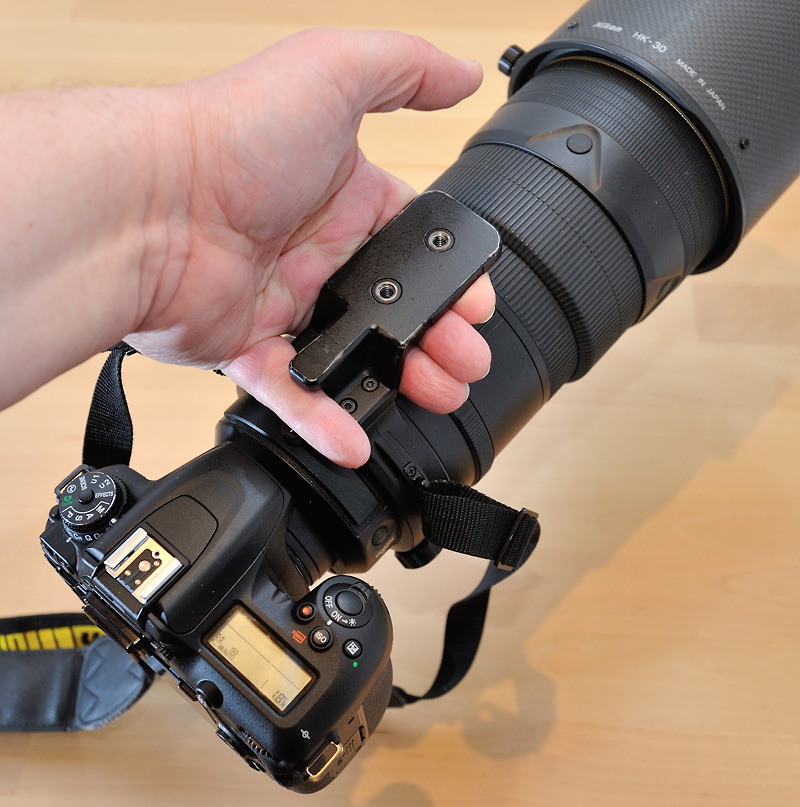
|
As I mentioned above, I bought the lens second-hand and it was fitted with a tripod mount from Really Right Stuff. This has the advantage that it can be placed directly onto an Arca-Swiss coupling. But unfortunately it is not really suitable for carrying. It also sometimes gets in the way when focussing manually because it is a bit larger than the original foot. I knew the original foot from the lenses I had rented. I was glad that it was included and that I could exchange it!
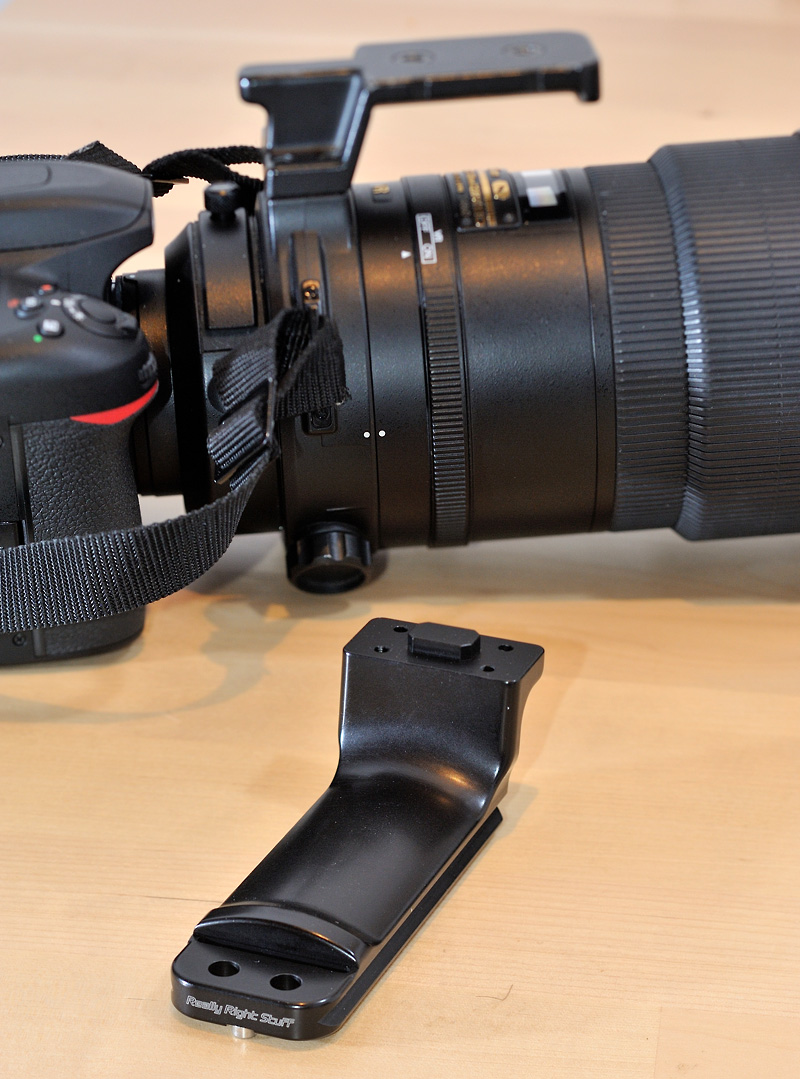
|
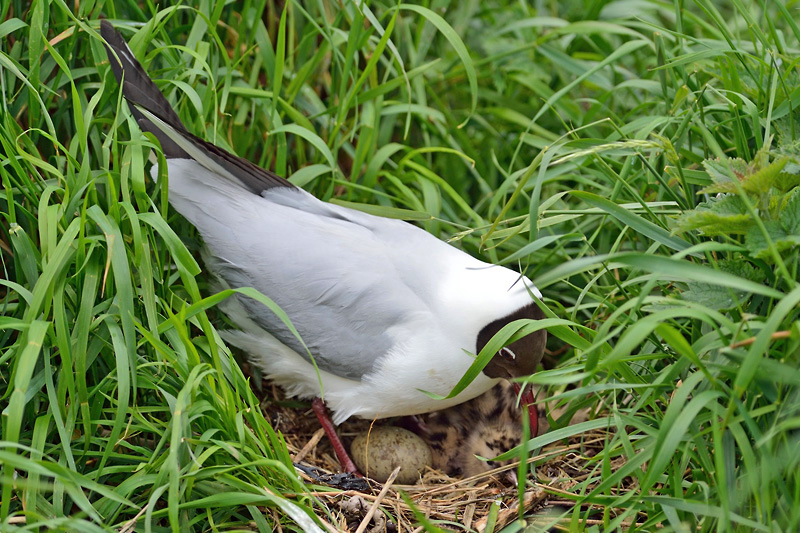
|
|
Black-headed gull with egg and chick. Captured in Denmark in May 2019 with my D4 plus TC-14EII plus 300mm f/2.8 (ISO 400, F5.6, 1/1000sec). |
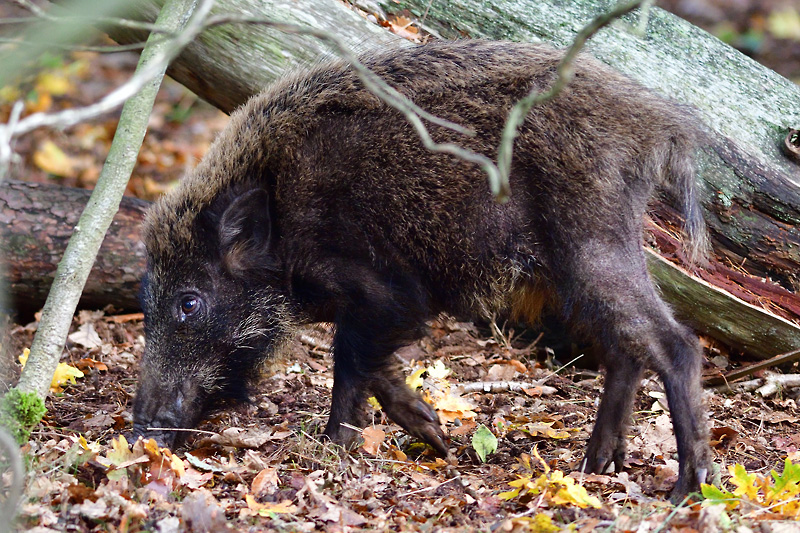
|
|
Boar piglet. Captured in Mecklenburg-Western Pomerania in October 2020 with my D7500 plus 300mm f/2.8 at ISO 1000, F3.5 and 1/250sec. |
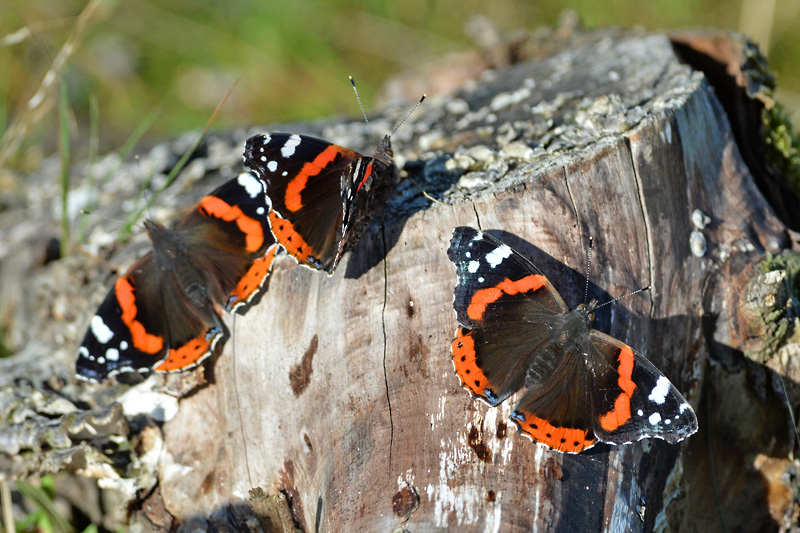
|
|
Warming up in the morning sun. Denmark, September 2020, D4 plus TC-20EIII plus 300mm f/2.8 at ISO 400, F7.1 and 1/1250sec. |
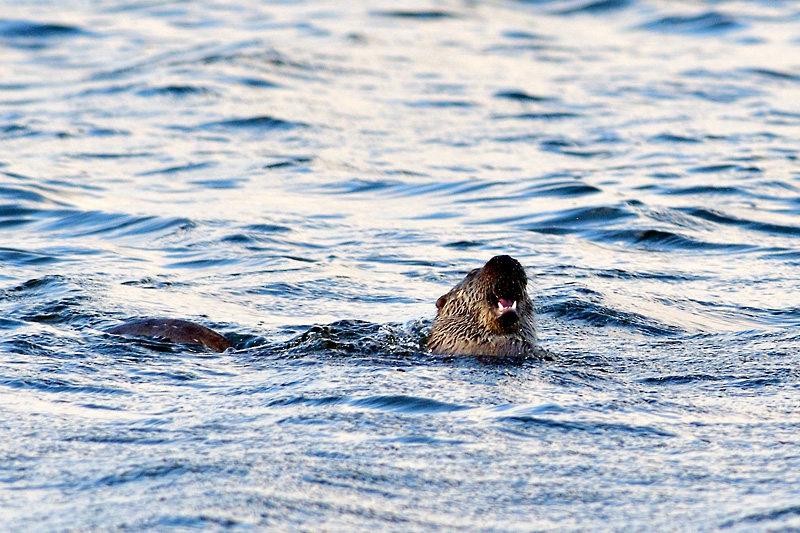
|
|
Otter hunting for fish. Captured in Western Pomeranian Lagoons National Park in October 2020. Nikon D7500, TC-14EII and 300mm f/2.8 at ISO 250, F5 and 1/1000sec. |